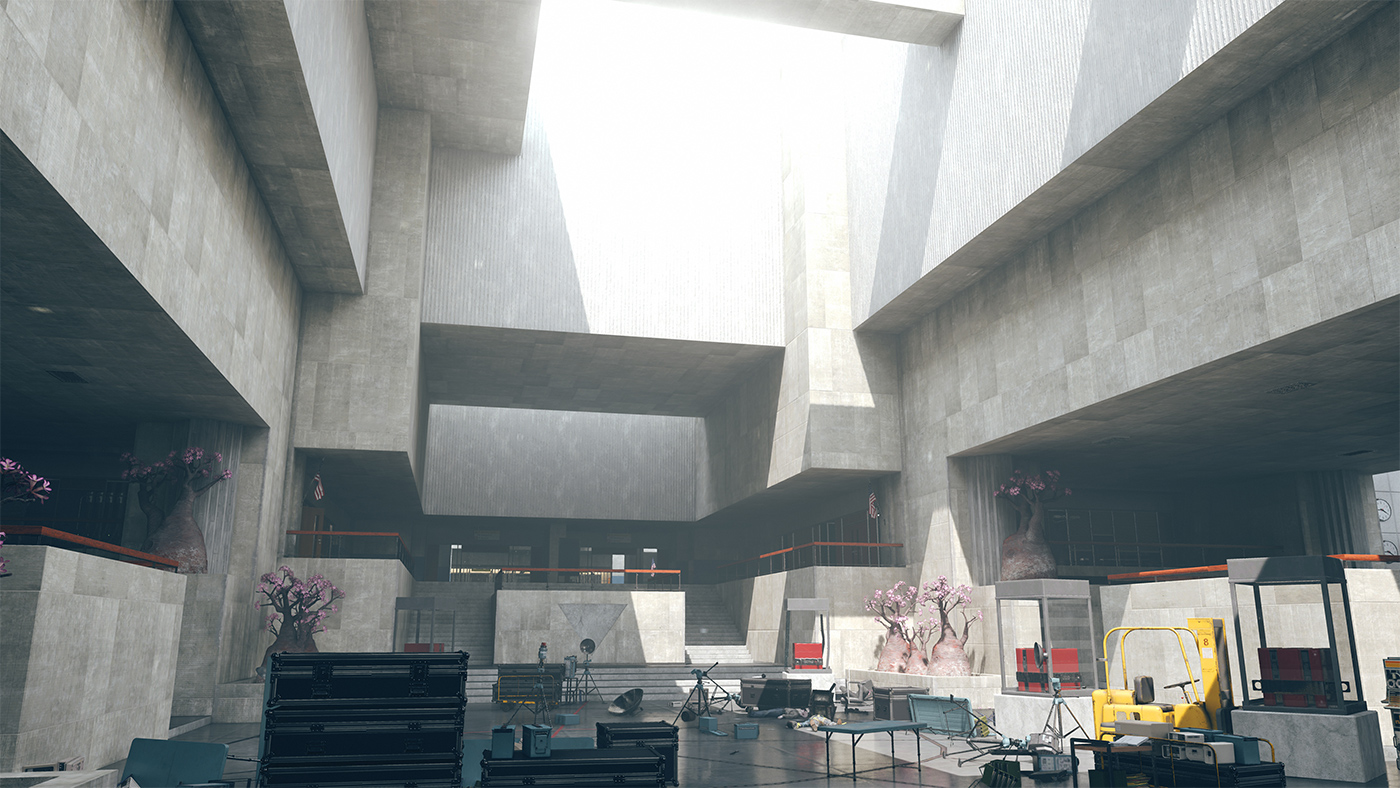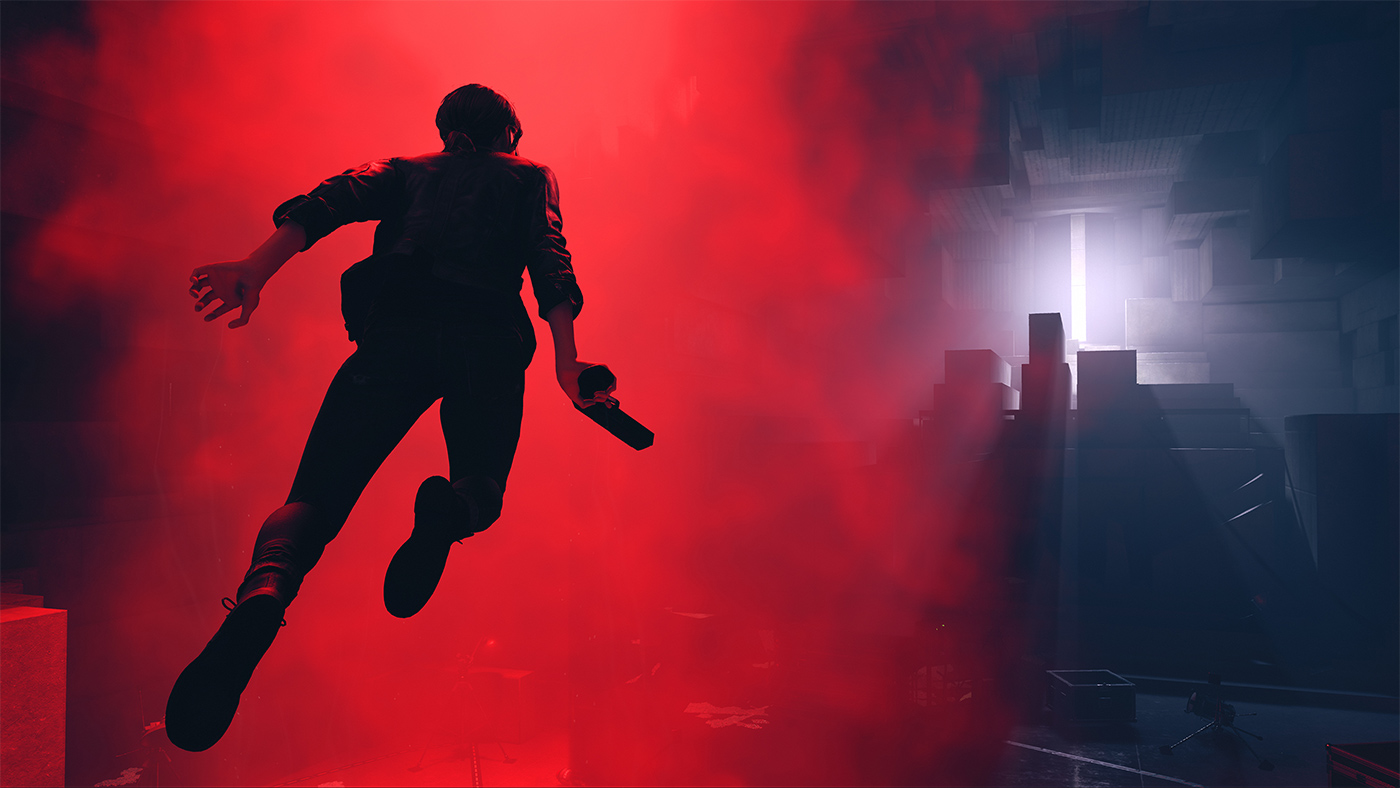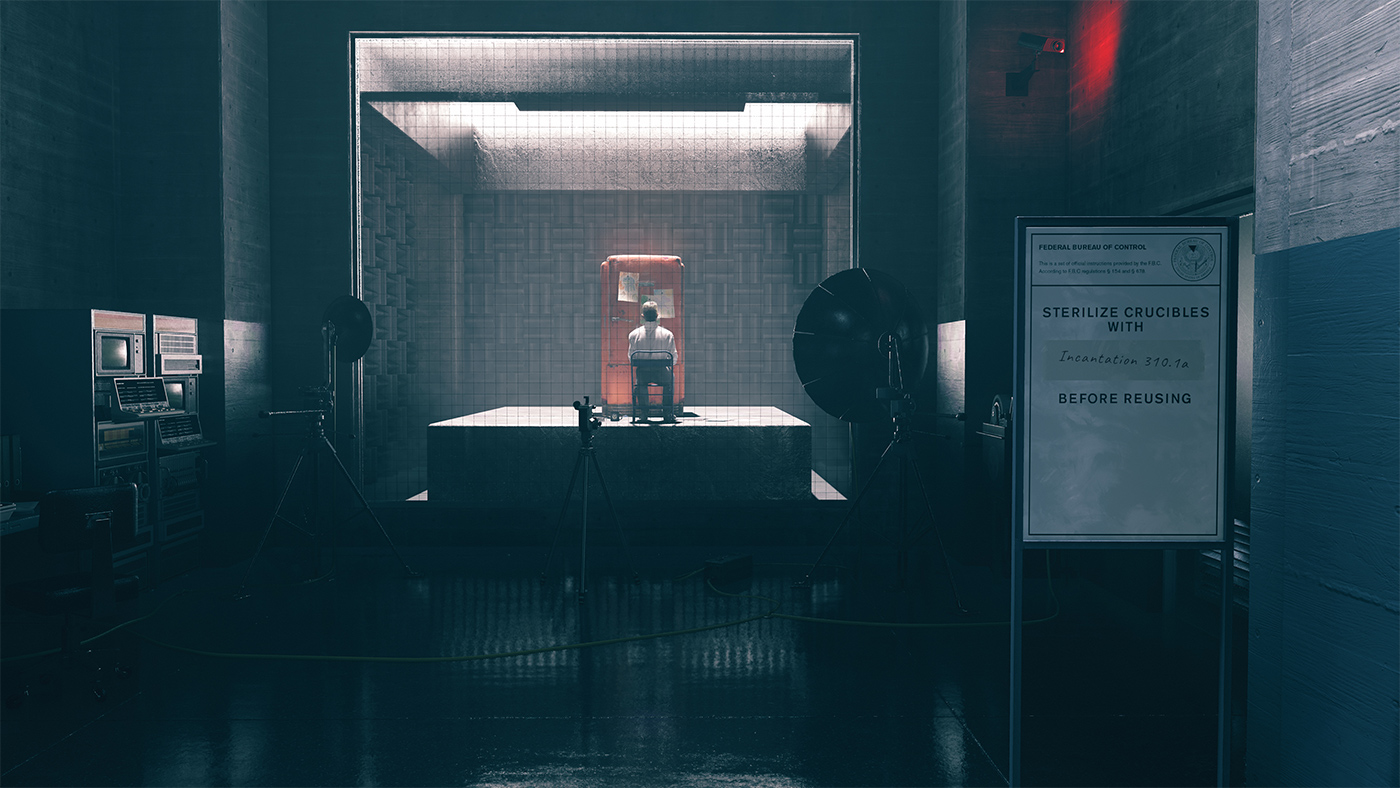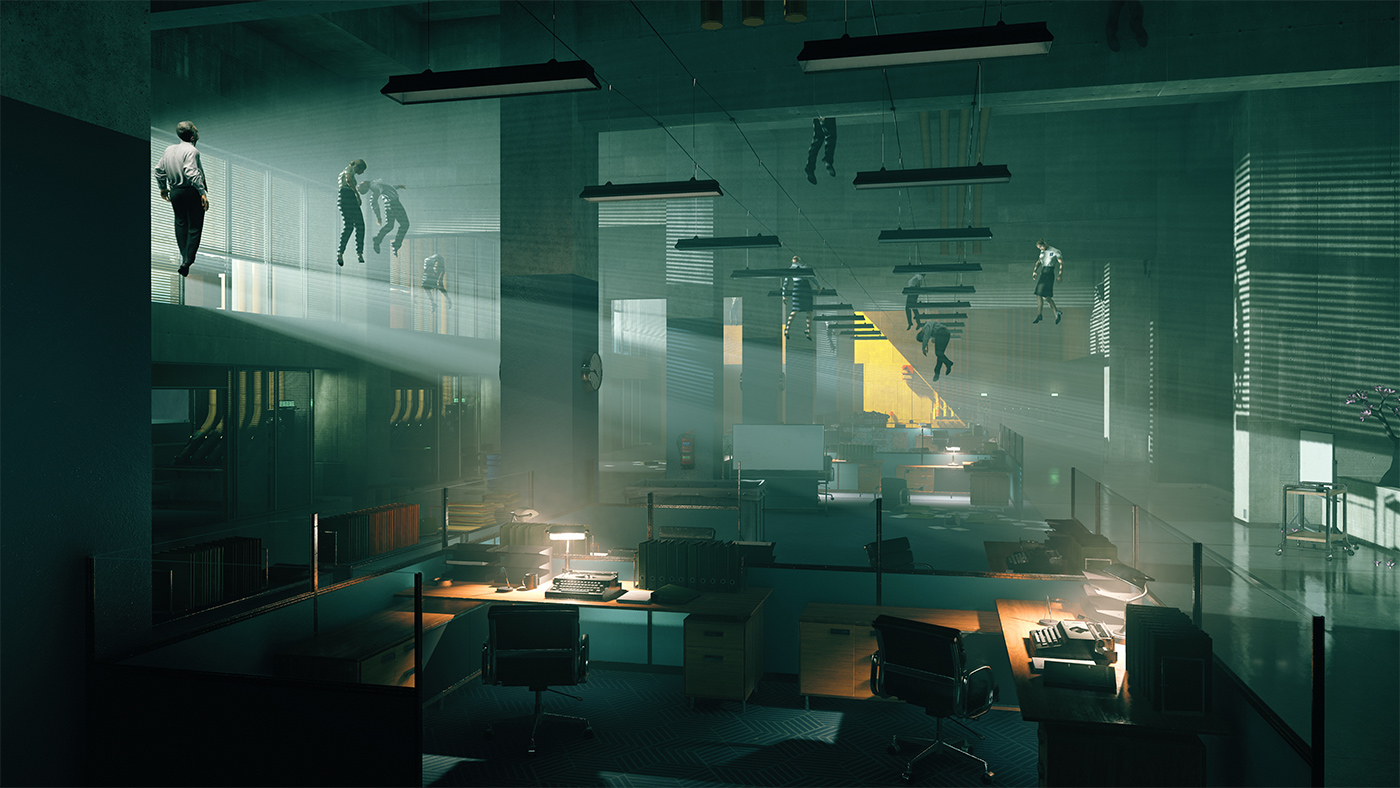‘Control’ Was Inspired by the New Weird of ‘Annihilation,’ Themes of ‘Alan Wake’
By Brian Crecente
LOS ANGELES (Variety.com) – “What if this is the ocean?”
It was a thought I couldn’t get out of my head after watching a short demo of Remedy Games’ upcoming action game rife with elements of new weird fiction, magic realism, and supernatural surprises.
While “Control” is clearly meant to be its own thing, an entirely new creative work birthed by the team at Remedy Games, its key conceit brought to mind the ending of 2010’s “Alan Wake,” in which the protagonist of the psychological thriller utters a confounding last line: “It’s not a lake — it’s an ocean.”
The meaning of that line is never explained and hope for a sequel to the game was killed when in 2015 Remedy founding member and writer Sam Lake walked me through all of the reasons “Alan Wake 2” was killed.
But there still lingers the suspicion, perhaps it’s better to call it a hope, that Wake could live on in Remedy’s other titles, that the ocean that Wake speaks of, is a shared universe in which all Remedy games co-exist.
So minutes after sitting down in a small back room at E3, I ask Lake the question I had been thinking about for 30 minutes.
His answer was just as perplexing as Wake’s final words.
P7
“” started out at Remedy as Project 7, a mysterious, codenamed work that the company quietly shopped around for years before settling on the right publishing partner.
In 2016, the developers told me that with , they wanted to do something different. A company known for its rich, narrowly focused narratives in games, Remedy wanted to try its hand at creating a world in which players will find and create their own deeply compelling stories. They, a developer told me at the time, wanted to do the opposite of their tradition, instead of telling a story that happens in the world, they wanted to create a world in which stories happen.
Essentially, they want to deliver the ocean to players, not the lake.
And they want to do it in a way that won’t get in the way of players crafting their own experiences, of sort, or at least that was the idea two years ago.
Another key conceit in those early days was that Remedy wanted to try its hand at multiplayer gaming. P7 as originally envisioned was meant to be cooperative, a first step toward what the team believed could be shared experiences between players.
And running through the whole thing, through the cooperative experiences, the multiplayer, the player-created story, will still be a strong element of what Remedy does best, telling their own stories. Everything, it seemed, would be created at the service of storytelling of one sort or another.
How much of that original conceit remains when P7 became “Control” still remains to be seen, even after a demo, watching gameplay and an interview.
“Control”
In “Control” players guide Jesse Faden, voiced by Courtney Hope (“The Bold and the Beautiful,” “Quantum Break”), who becomes the director of the Federal Bureau of Control after the former director is killed. The entire game seems to take place inside the Oldest House, which from the outside appears to be a brutalist building in downtown Manhattan, but inside is an ever-shifting world within a building that serves as the bureau’s headquarters.
Faden makes her way through the Oldest House armed with The Director’s Pistol, a shapeshifting firearm, and her own ever-expanding abilities as she fights off an evil force known as Hiss who have begun to disrupt reality inside the bureau.
The hands-off demo of the game took place about halfway through “Control,” said Anna Megill, narrative lead on the game.
The opening moments of the demo set a surreal scene. As Faden walks into a massive room, we see people floating above in an encroaching darkness, they seem dead or unconscious, their heads lolled back, arms and legs hanging limply.
A voice tells Faden that a previous team had made their way through this part of the house earlier and were now missing. Faden promises to find them.
As she continues to explore the massive rooms of the building, sometimes the walls unfold or change shape, creating new rooms, closing off others. Her gun, too, seems made of grey blocks that at time seem in motion, morphing the weapon into different shapes.
At one point, Faden happens upon a man who seems be a janitor. He walks by, seemingly ignoring her and then suddenly turns and attacks. Faden uses her abilities to pull debris and cement from the floor and walks to form a sort of shield, blocking his attack, and then flings the rubble at her attacker.
The scene unfolds as the room fills with corrupted bureau agents. Faden uses her telekinetic ability to create shields, toss objects at the enemies, and also fires her service weapon.
Megill tells us that both the weapon and Faden’s powers can be upgraded over time.
After dispatching the corrupted, Faden walks into a larger open space, in the distance the room is lit with some unseen blood-red lighting, three bodies float there, silhouetted by the eery light.
The bodies suddenly drop to the floor and attack, Faden takes one down with a telekinetic thrust, shoot the others with her gun as its barrell spreads apart. There’s a floating object here, and Faden examines it, unlocking something. The entire house shifts.
“The Oldest House is a place of power,” Megill says. “It constantly shifts and rearranges itself to reveal new areas. All of the doors lead to different parts of the Oldest House, each with its own areas. It’s a world within a location.”
The result is a game that can’t really be played along on a straight path, she said.
The more Faden explores, the more it becomes obvious that the world of “Control” isn’t exactly a typical place, despite the Oldest House New York location.
“Rituals control the environment here,” Megill says. “Dream logic is a requirement.”
As if by example, Faden walks to a light switch, flicks it off, then on, and then off, and suddenly between the span of light and darkness, the room changes. Where once there was a mirror, now there is a hallway. After examining an office down the hallway which looks like it’s stuck in the ’70s, Faden returns and once more uses the light switch to find another area.
This time, the director is presented with a surreal image, a crumbling bridge of sorts that gives way to bits of floating cement. She uses her ability to levitate across the gaps, making her way into another hallway and then an elevator.
The elevator takes Faden to the “altered items area.” This section of the house is broken down into large bays, working areas where the bureau examines items that have been somehow permanently altered by some arcane force. Sometimes these items are harmless, sometimes they’re not.
In one bay there appears to be car, its front end smashed into a light pole as if mid-collision. In the next bay, sits a man, his back to Faden. He appears to be facing an old refrigerator. When he hears her approach he calls out, asking for help, asking if she is there to replace him. He tells her that he has to stare at the refrigerator, or someone does, or it will “deviate.” Faden apologizes and makes her way past the man as he yells for help.
The demo ends with Faden making her way deeper into the house before confronting a television. She does something to it and the house sort of unstructures itself. The walls pull apart, forming a massive tornado of objects and then cuts into another wall. A group of shadowy enemies appear, slowly coalescing to form a giant entity and Faden attacks it, eventually defeating it. The moment ends with her touching the television, the scene fading to white and then revealing her floating on the television screen under a black pyramid.
There is no real explanation, at least not of story.
Megill explains that “Control” is a supernatural third-person action-adventure game with “memorable characters and a twisted storyline.” The game is due out in 2019 on PlayStation 4, Xbox One, and PC.
Sam Lake: The Ocean
Later, just a dozen or so steps from the demo room, sitting down with Megill and Lake to discuss the game,
I bring up my “not a lake, an ocean” thoughts and ask why the game feels in some ways like an “Alan Wake” title. Is it connected?
Lake points out that the game runs on Remedy’s in-house game engine, the same one that powered “Alan Wake,” that the same art department created the look for both games, that there are certain aesthetics that the team is drawn to, no matter what they’re working on.
“That’s part of it,” he said. “Tonally, thematically, I can see feeling that this is closer to some ideas found in ‘Alan Wake’ than what was the case with [Remedy’s last game] ‘Quantum Break.’”
“What we have set out to do with ‘Control’ is to create a lot of quests and things to find out,” he adds. “World building is more important than ever before in this one. We wanted to create a deep, deep world. In some ways we’re looking to give the story a new purpose. In this case, it’s to introduce you and our hero to this world and plunge both the player and the hero deep into it.”
So is it an ocean?
Lake never really answers, nor will he say if the game takes place in the same universe of “Alan Wake.” He’d prefer, it seems, to allow players to come to their own conclusions, much like with the ending of “Alan Wake 2.”
Annihilation
The team decided to work on this as a sort of antidote to working on “Quantum Break,” a game that was very linear and very guided.
“We wanted to try something very different from that,” Lake said. “We drew inspiration from the literary genre new weird.”
New weird is a genre that started bubbling up in the ’90s, but perhaps got its biggest splash recently with the film “” based on Jeff VanderMeer’s book of the same name. It’s a genre that sort of mashes together a lot of ideas from the works of H.P. Lovecraft to pulp horror, fantastic science fiction, and speculative fiction.
Lake said that in part “Control” was inspired by The Southern Reach Trilogy, of which “Annihilation,” is the first.
“There are clear parallels to ‘Annihilation,’” Megill added. “There is a feeling you get from ‘Annihilation’ about that sentient organic being, it filled you with curiosity and awe. That is what we are going for, that sense of wonder and discovery to keep players invested in the game.”
Lake said as with “Annihilation,” “Control” is filled with a sense of mystery and the unexplained.
“Strange things that maybe the human mind is not capable of exploring or explaining even now,” he said. “It felt good to go with that idea that there are hidden things here. It is very exciting as an idea.”
Along with that genre came the decision to not lead the player much at all through the game, which is also not linear.
“There is the main thread, but a lot of other missions, a lot of exploration, secrets, a lot of things to do, and a lot of discovery,” Lake said. “We’re not giving you anything on a platter. There’s a story to follow and a story to piece together. Maybe when it’s done, opinions will vary. We would welcome debate and discussion.”
Megill said the game expects a lot of players.
“There’s a lot of learning by experiencing. It’s a challenging game and a challenging story.”




